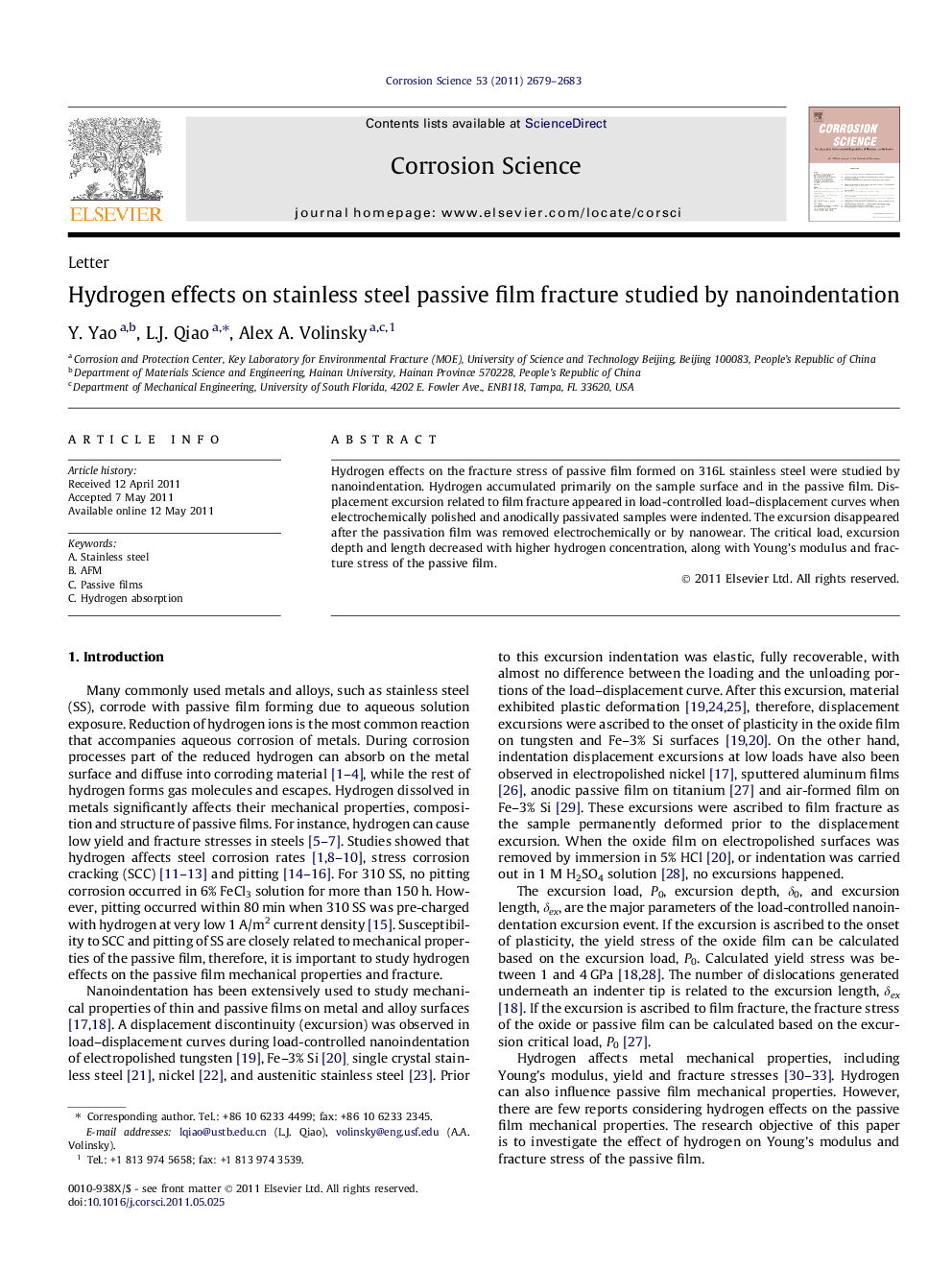| Article ID | Journal | Published Year | Pages | File Type |
|---|---|---|---|---|
| 1469947 | Corrosion Science | 2011 | 5 Pages |
Abstract
Hydrogen effects on the fracture stress of passive film formed on 316L stainless steel were studied by nanoindentation. Hydrogen accumulated primarily on the sample surface and in the passive film. Displacement excursion related to film fracture appeared in load-controlled load–displacement curves when electrochemically polished and anodically passivated samples were indented. The excursion disappeared after the passivation film was removed electrochemically or by nanowear. The critical load, excursion depth and length decreased with higher hydrogen concentration, along with Young’s modulus and fracture stress of the passive film.
Related Topics
Physical Sciences and Engineering
Materials Science
Ceramics and Composites
Authors
Y. Yao, L.J. Qiao, Alex A. Volinsky,
